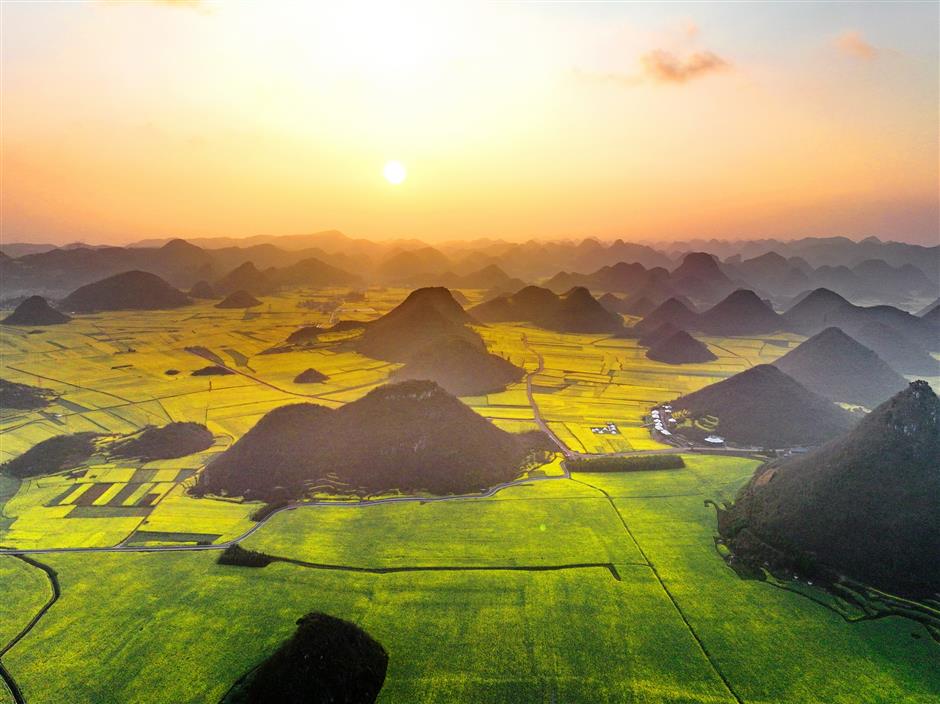The first time I saw the canola flower fields in China, I thought I was staring at a giant rice paddy. The yellow color looked exactly like fields you’d see in the countryside. I started wondering—was this just sleep deprivation messing with my vision? But after rubbing my eyes a few times (yes, I did the whole cartoon-style eye rub), I realized—nope, not rice. It’s a full-blown canola flower field in China.
If you’ve ever imagined stepping into an animated movie, well, this is exactly the vibe—yellow tones everywhere and a breezy wind making it feel extra dreamy. But guess what? It’s real and you can visit! These canola fields look like someone accidentally spilled a giant bucket of yellow paint across the land, and now people flock there for photos, picnics, and yes, hot air balloon rides. Real balloons. Not the kind you blow up at birthday parties!
What Even Is a Canola Flower? And Why Is Everyone Obsessed?
Okay, canola flowers aren’t sunflowers’ long-lost cousins, even if they look like them. They come from the rapeseed plant, which sounds like a side character from an anime, but trust me—this flower takes its job seriously. It’s a major producer of healthy vegetable oil. But outside the kitchen, it moonlights as a full-time model. Every year, hundreds of hectares of land turn into a yellow catwalk.
And here’s the cool part—China doesn’t just grow canola for harvesting. Nope, they go all in and turn these fields into full-blown tourist attractions. Probably the only place on earth where flowers get more camera time than K-pop idols.
Where Are These Fields That Make People Fall in Love?
Luoping, Yunnan: Where to See the Stunning Canola Flower Fields in China
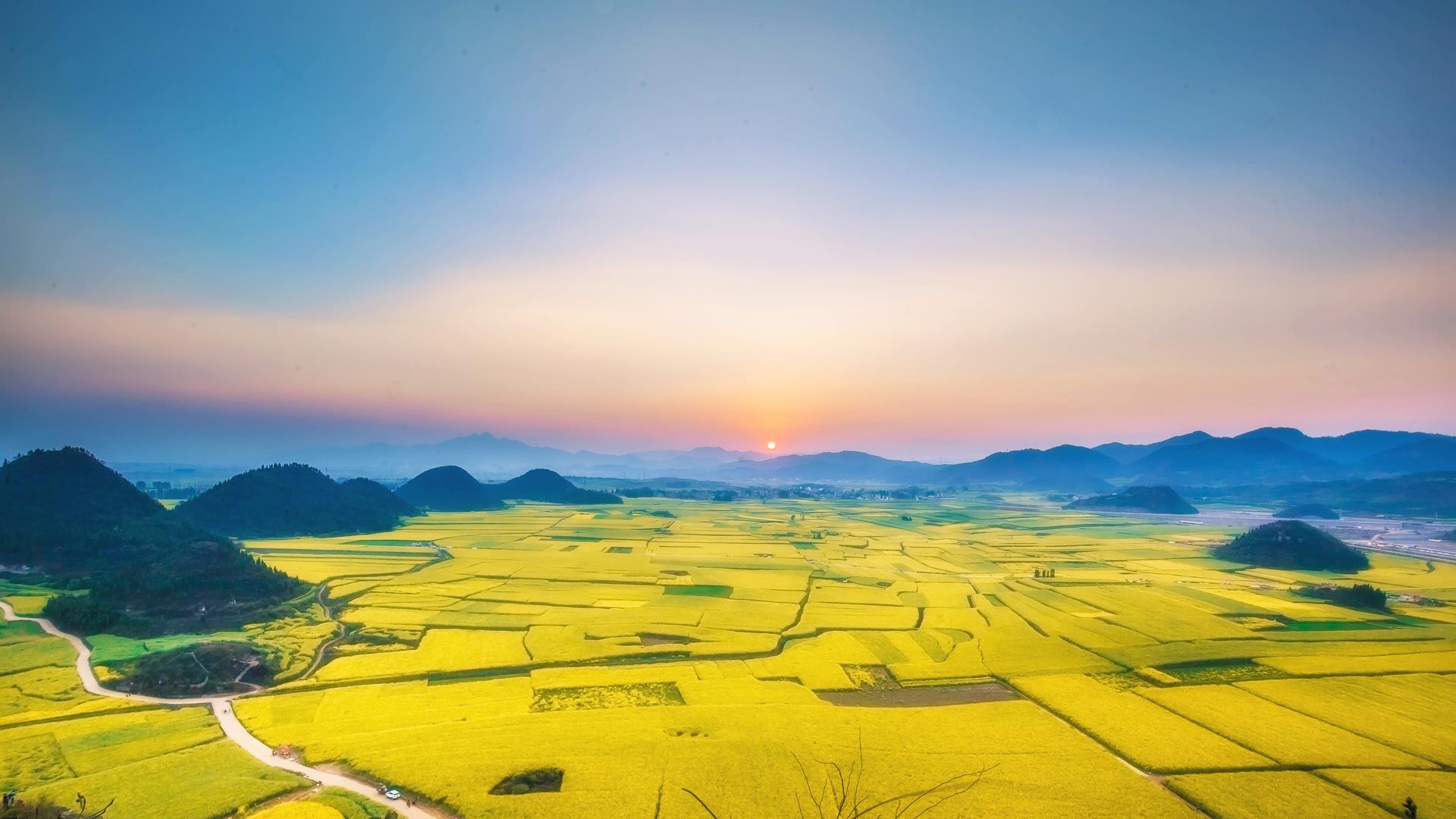
Luoping looks like someone copy-pasted the Windows XP wallpaper and cranked the yellow saturation up by 200%. Imagine rows of cone-shaped hills surrounded by glowing yellow flower seas that sparkle like low-budget but charming LED lights. This place often ends up on lists like “Top 10 Spots to Photograph Before Your Battery Dies,” and trust me, they’re not kidding.
Bonus points? There’s a flower festival! Expect dancing, food, bazaars, and if you’re lucky, you might catch a grandma breaking it down with tourists. Nothing beats that moment.
Wuyuan, Jiangxi: The Instagram Darling Since the Dynasties
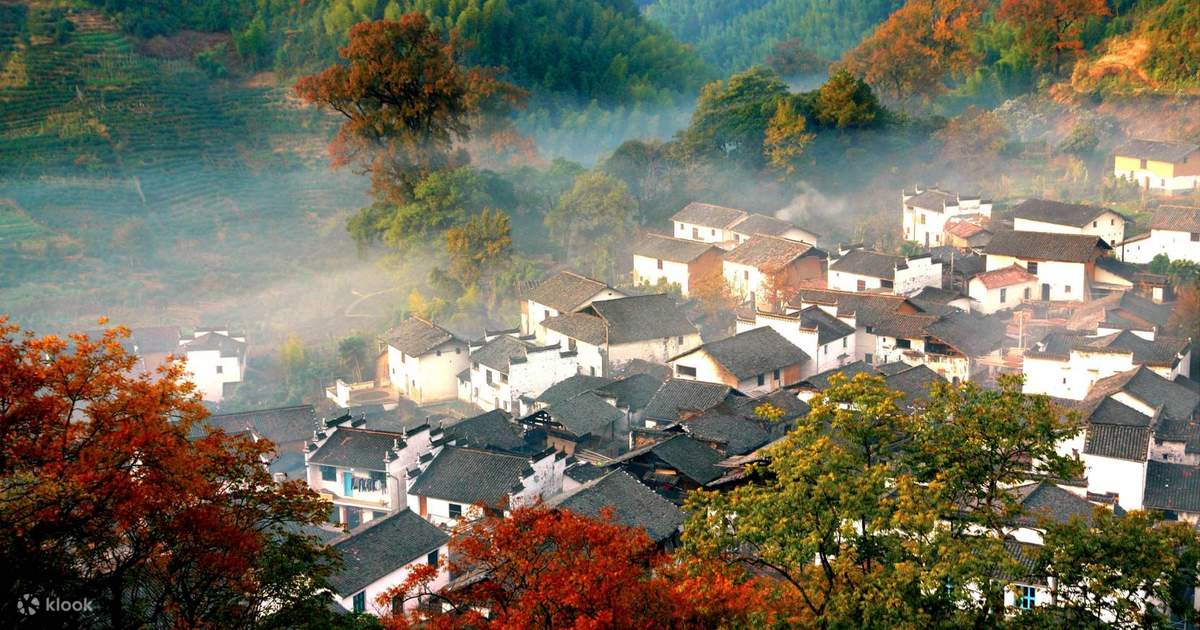
If you love that vintage vibe and ancient houses that look like they came out of a historical drama, Wuyuan might be your new favorite hangout. The flower fields are right next to villages with sleek black-and-white rooftops—imagine minimalist design, but like… from the 1600s. It’s perfect for those moody aesthetic shots, even if you’re visiting with a crowd that feels like a high school field trip.
And don’t be surprised if you run into a professional photographer disguised as a local villager. They’re just trying to score their next iconic shot, too.
Dali, Yunnan: A Healing Spot for Your Heart (and a Workout for Your Camera)
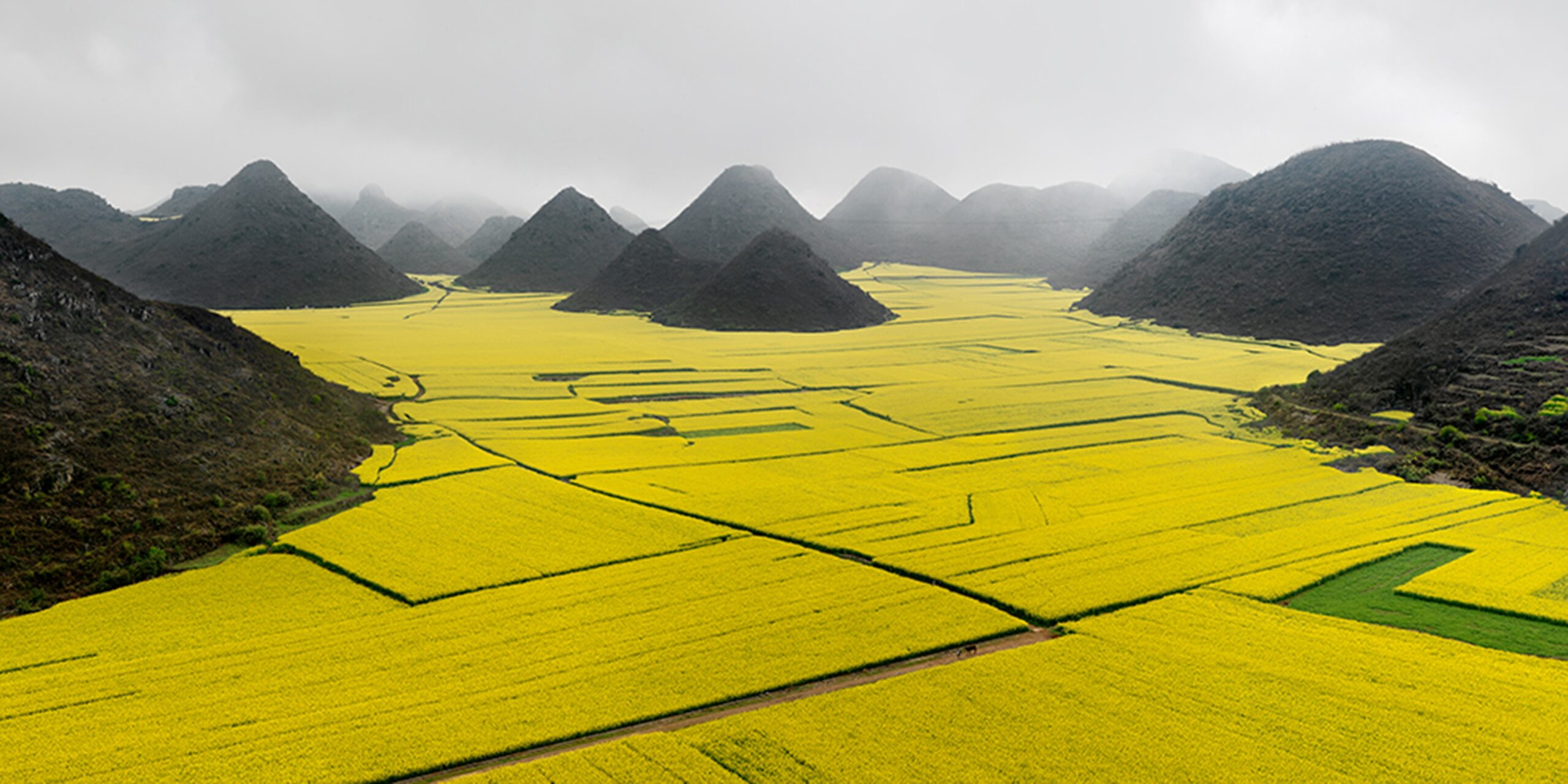
Dali is way calmer. No dramatic hills, no intense terrain—just a peaceful lake and chilled-out mountains peeking through the canola fields. It’s perfect for solo soul-searching or couple bonding without fighting over photo angles. You can stroll through the flowers and ponder life’s big questions, like “Why can’t life always be this beautiful?”
Timing Is Everything—Come When They Bloom, Not When It’s Just Grass
Don’t roll up during the rainy season or when the fields still look like a soccer pitch before the World Cup final. The sweet spot is around mid-March when the blooms are showing off their full glory and the weather’s still being nice. Come too early in February and you’ll be disappointed—like opening a bento box and finding only rice.
So do some recon. Check local tourism info or social media updates. Flowers may be charming, but they won’t wait around if you’re late.
Fun Stuff to Do—Just Don’t Nap in the Middle of the Field
Photo Hunt Until Your Memory Card Cries
If you show up without a camera or phone, sorry, you’re a rare species. This place is heaven for every level of photographer, from the pros to those who only know the “click” button. Each corner has a different vibe. Some are dramatic, some romantic, and some… well, full of kindergartners having a field trip and singing their lungs out.
Tip: Climb a nearby hill or observation tower. The view from above is jaw-dropping, but don’t expect Wi-Fi up there.
Hot Air Balloon Rides: Flying Over a Giant Omelet
These balloons aren’t playing around. They’re big, they’re colorful, and the view from up top? Feels like watching the world in a strategy game like Clash of Clans. You’ll see neat yellow patches that look like class schedules—but way more fun. The price tag’s not tiny, though. So yeah, prep your wallet and your courage.
Picnic Vibes: Solo or Squad Mode

Bring snacks, a mat, and good vibes. Perfect for chill eating surrounded by flowers. You might even get a little poetic—“life is like a flower, it takes time to bloom.” Just don’t get too deep in your thoughts and forget to leave before sunset.
Festival Time: More Humans Than Flowers
When the canola flower festival kicks off, it’s like a daytime version of a night market. Traditional music, local food, and a suspicious number of flower-shaped keychains flood the area. Watch your wallet—you might end up buying everything, even if you swore you were “just looking.”
Random Facts That Won’t Be on a Test, But Are Fun Anyway
-
“Canola” stands for Canadian Oil, Low Acid. And yet China’s the one making it famous with the fields.
-
Bees adore canola. So if you’re allergic, get your ninja moves ready.
-
It’s a multi-talent: cooking oil, biofuel, animal feed, and of course, Instagram content.
Estimated Budget for Visiting Canola Fields in China
Just so you’re not caught off guard, here’s a rough budget breakdown:
| Expense | Estimated Cost (RMB) | Estimated Cost (USD) |
|---|---|---|
| Field Entry Ticket | 50–100 RMB | $7–14 |
| Local Transportation | 100–300 RMB | $14–42 |
| Accommodation/night | 200–500 RMB | $28–70 |
| Meals/day | 80–150 RMB | $11–21 |
| Hot Air Balloon Ride | 300–800 RMB | $42–111 |
| Souvenirs | 100–300 RMB | $14–42 |
Tips So You Don’t Look Lost
-
Don’t wear all yellow—you’ll blend in like a chameleon.
-
Bring a power bank. Running out of battery during golden hour is just tragic.
-
Wear comfy shoes. This is a flower field, not a fashion runway.
-
Respect the flowers and the farmers. Don’t stomp or yank—flowers have feelings, too.
-
Pack wet wipes. Seriously, they’re lifesavers.
A Sweet Ending That’s Not Boring
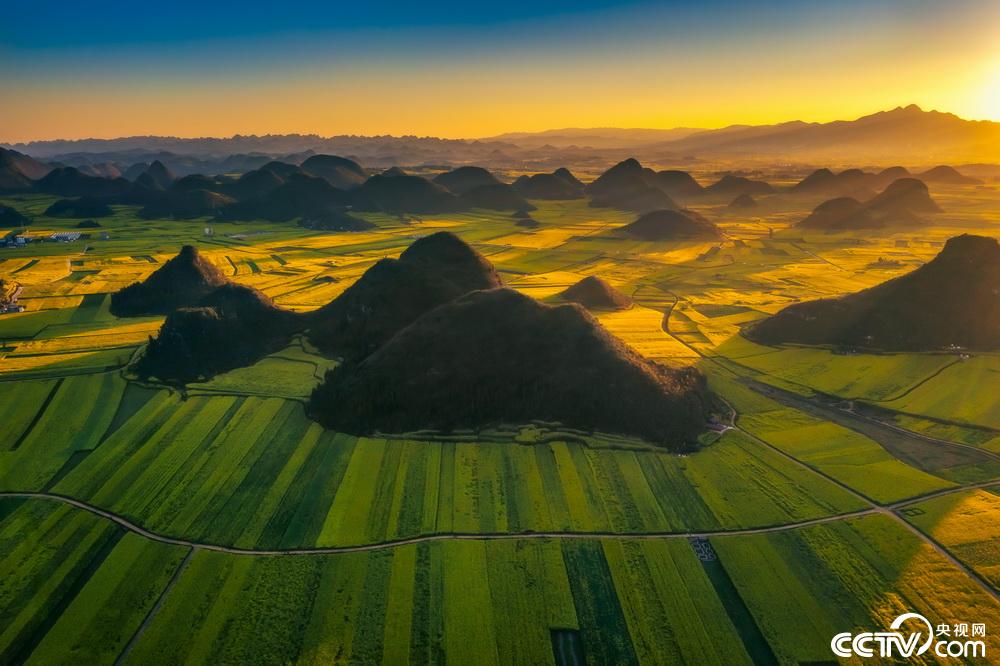
Visiting China’s canola flower fields is like watching a feel-good romance movie with a happy ending—and free snacks. It’s beautiful, peaceful, and filled with moments you’ll treasure (and store in your gallery forever). Whether you’re looking for a chill holiday, a dream photo spot, or just want to feel tiny in a field of yellow blooms, this place checks all the boxes.
Who knows? You might even find life inspiration here… or at least a killer caption for your next post.
FAQ – All About the Canola Flower Fields in China
Q1: Where exactly are these canola flower fields in China?
A: The most famous ones are in Luoping (Yunnan), Wuyuan (Jiangxi), and Dali (Yunnan). Each has its unique vibe: Luoping is dramatic, Wuyuan offers ancient beauty, and Dali is peaceful and serene.
Q2: When’s the best time to visit the canola flower fields in China?
A: Aim for mid-March when the flowers bloom at their fullest. Visiting too early, like in February, will leave you staring at green fields instead of the vibrant yellow blossoms.
Q3: Is there an entry fee?
A: Yes, most places charge around 50–100 RMB (around Rp 110,000–220,000). Worth every cent for nature’s real-life Photoshop.
Q4: Can I ride a hot air balloon there?
A: Absolutely! And no, it’s not a prank. It costs 300–800 RMB, but the view from up there is like flying over a giant yellow omelet—glorious and oddly satisfying.
Q5: Can I bring snacks and have a picnic?
A: Heck yes! Bring snacks, a mat, and your chill attitude. Just don’t fall asleep in the middle of the flowers unless you want to wake up as part of someone’s drone photo.
Q6: Is it safe for families with kids?
A: 100%. Expect to bump into kindergartners singing in the middle of flower fields. Just keep an eye on the little ones, especially near hilly spots or festival crowds.
Q7: What should I wear?
A: Please don’t wear all yellow, unless your dream is to blend in like a ninja of flowers. Also, comfy shoes are a must. This isn’t a fashion runway—it’s a real, beautiful, earthy field.
Q8: How much should I budget for this trip?
A: Here’s a rough breakdown:
| Item | Estimated Cost (RMB) | Estimated Cost (IDR) |
|---|---|---|
| Entry Ticket | 50–100 | Rp 110,000–220,000 |
| Local Transport | 100–300 | Rp 220,000–660,000 |
| Accommodation/Night | 200–500 | Rp 440,000–1,100,000 |
| Food/Day | 80–150 | Rp 176,000–330,000 |
| Hot Air Balloon Ride | 300–800 | Rp 660,000–1,760,000 |
| Souvenirs | 100–300 | Rp 220,000–660,000 |
Exchange rate used: 1 RMB = Rp 2,200 (subject to your fate and forex market drama).
Q9: Will I need a guide?
A: Not really, unless you want deep historical background or get lost easily (no judgment). Most travelers just wander, snap photos, and vibe. Local info boards and signs usually help.
Q10: What should I NOT do there?
A:
-
Don’t step on the flowers (they’re not your yoga mat).
-
Don’t pluck them (they’re not souvenirs).
-
Don’t litter (this isn’t your living room).
-
Don’t be that person blasting loud music in the middle of a flower garden.
-
Respect the space. These blooms didn’t work hard to look cute, just for you to ruin it.
If you love exploring unique destinations, check out the Salar de Uyuni Travel Guide for an unforgettable adventure to the world’s largest salt flat!
